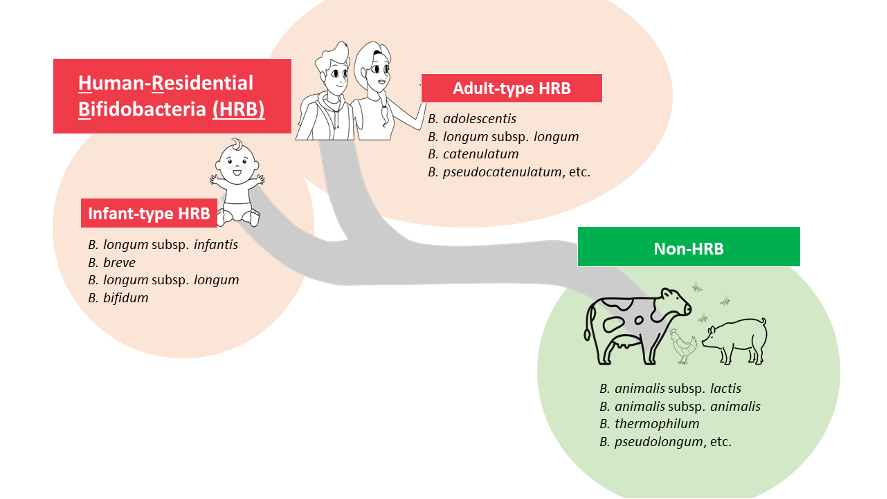Research summary
Research outline
Probiotics are defined as “live microorganisms that, when administered in adequate amounts, confer a health benefit on the host,” and bifidobacteria and lactobacilli are most commonly used as probiotics in food and medicine globally. Research suggests that bifidobacteria have co-evolved with hominids for over 15 million years, and we have collectively named the species that are characteristic of the human intestinal tract as “Human-Residential Bifidobacteria (HRB)”. Accumulating evidence shows that HRB plays an extremely important role in human health. However, the mechanisms behind the probiotic effect of bifidobacteria remain unclear, because probiotics research has historically focused on the human (host) side (e.g., functional evaluation through clinical trials) and research from the bacterial side is limited. To address this research gap, our department will promote research from the probiotic side. Specifically, we will elucidate the molecular mechanisms underlying symbiosis and coevolution between HRB and humans.
Main themes

Distinctive differences in ecological distribution of bifidobacteria (HRB vs non-HRB).
- Elucidation of the symbiotic and co-evolutionary mechanisms between bifidobacteria, gut bacteria, and humans.
- Understanding the molecular basis of health-promoting effects of probiotics and development of technologies for social implementation.
Member
|
ODAMAKI, ToshitakaVisiting Professor |
odamaki.toshitaka.0z*kyoto-u.ac.jp See faculty information |
|---|
- Please note that the @ symbol has been replaced by *.
Access
North Campus, Graduate School of Biostudies Bldg.

